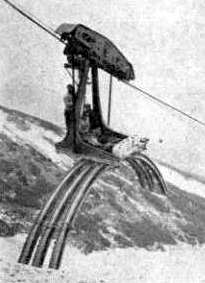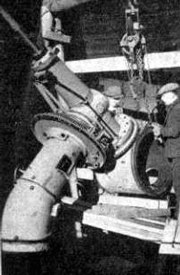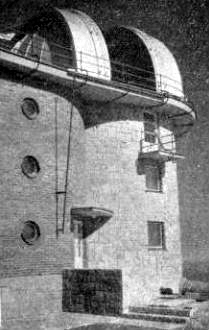|
Comets
Czech & Slovak comet discoverers
Antonín Bečvář
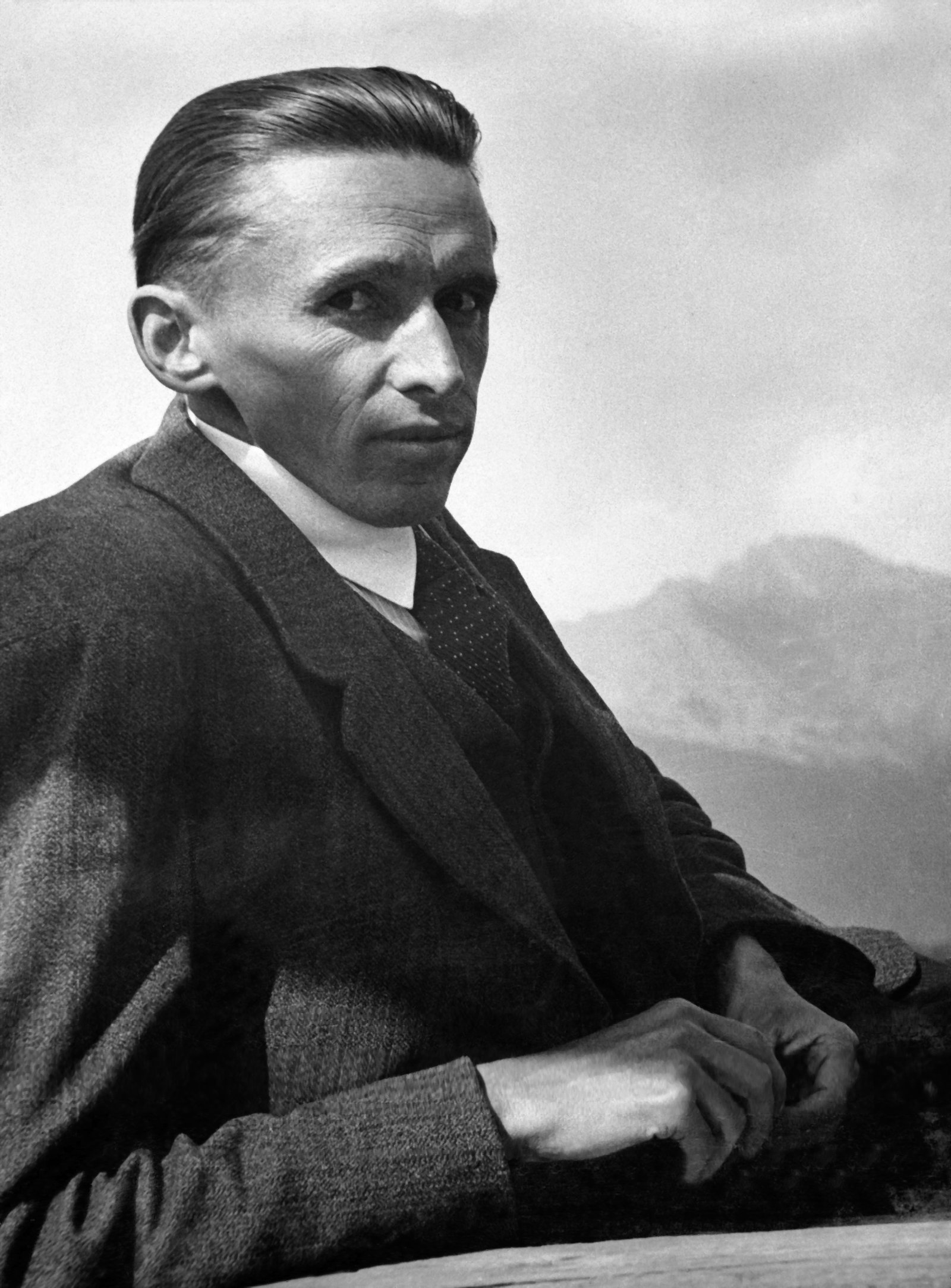
Antonín Bečvář,
(1901-1965), Czech astronomer and meteorologist. He was known by his excelent
charts of the sky. Propagator od astronomy in his excelent writings, he played
important role in building of Observatory Skalnate Pleso. He discovered 2 comets.
As an old frech proverb says "No man is a prophet in his own country",
sadly it is the case of Antonín Bečvář too.
He was born 10. June 1901 in Stara Boleslav, near Prague. At age 16 he moved
with his parents to Brandys nad Labem. He suffered by croup and scarlet fever
in his childhood, the latter caused him curvature of his spine. After
graduation in 1921 he started his astronomy and meteorology studies at
Charles University in Prague. He succesfully finished it in 1924. Then he
followed his doctoral studies, but due to his healthy problems, he had to
interrupt it for several years. When his health stabilized, he continued
his studies and finished it in 1935 as the Doctor of natural sciences.
Although his weak health he was a avid astronomer. He started to observe meteors.
He built with his friends an observatory in the garden of his parents house.
The main telescope here was 250mm Newton reflector, another 130 mm refractor
and 2 astrograph were used there too. Bečvář cut the optics for this telescopes by his own.
Bečvář had a gift to write. He could play with words, his writnigs captured
readers attention and his style invoked interest for astronomy. He writes mostly
for Czech monthly astronomy magazine Říše hvězd (RH, Realm of Stars). There
in his first article he described how he constructed his first observatory in 1929.
During years 1936 - 1942 he published series of articles "From amateur astronomer
workshop" in RH.
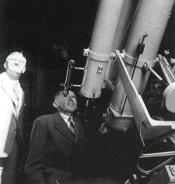
He started to work as meterologist in State spa in Strbske Pleso, High Tatras in
1937. Although his health condition, he was a keen hiker and tennis player. He
was a good musician too, he played on a violin in his childhood, later he daily
played on piano. He lived here in Kriváň Hotel and in a short time he convinced
the hotel management to build observatory on the terrace of the hotel. There he
moved his telescopes from Brandys nad Labem. Bečvář discovered a new comet from
this observatory, but it was not named after him at last.
He dreamed about astronomy observatory in High Tatras since 1933, when he took
part on Leonid meteor shower expedition there. When Czechoslovakia split up in
1939, he left in Slovakia. He took the advantage of new political situation and
benefited from it in order to make his dream come true. In those times the biggest
telescope in operation was 600mm reflector in Stara Dala (now Hurbanovo). When
the border line between Hungary and Slovakia moved northward and Stara Dala became
hungarian territory, the telescope was removed and stored in Presov. Bečvář again
used his good ability to convince - at this time the Slovak government.
They agreed to build a new observatory in High Tatras at 1870 meters above sea
level in Skalnate Pleso. The construction started in 1941 and brought to the
end in 1943. Bečvář as its founder, became its first director.
In 1944 he wrote in RH about this achievement also these words:
"It is first condition of happines to find out own purpose of life and
accomplishment of the time I was given, but this is not my happines to made
my work done at 15 000th days of my life on Earth. ... (building the observatory
in Skalnate Pleso) ... My happiness is the time being left for me to fulfill."
Bečvář could not guess at that time, that the observatory he dreamed about, which
he built up, and also saved from destruction, he would leave involuntary and
before his time. His third built observatory... Only one year after observatory
completion Bečvář saved it before destruction by retreated German troops.
Meteor observation, which he started in Brandys nad Labem, he
also continued also from Skalnate Pleso. He observed with his coworkers a unknown
meteor shower right before Christmas 1945, on 22. Dec., later known as Ursids.
The following year 1946, at 9. October he observed another meteor shower Giacobinids. Bečvář
is one of the few, or probably the only one astronomer who watched both meteor
showers in 1933 and then also in 1946.
For readers of RH he concluded
his report about Giacobinids with this words:
"Second time in our life we witnessed meteor shower, the most beautiful phenomenon
for meteor watchers, for the first time it was under lowlands clouds, condemn to
helpless idleness, on second time above it, in crystal clear air of mountains.
Three times in a life anyone would be hardly invited to such a cosmic performance,
and perhaps it would not be correct to ask or await it, comparing to those who
never were present".
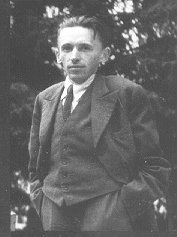
In 1946 Bečvář obtained several giant binoculars 25x100 Somet Binar made in
Czechoslovakia for his observatory. He recognized its qualities at once,
and presumed that binoculars could be very useful for comet hunting. And he
was right. Astronomers at Skalnate Pleso started their famous era of comet discoveries
soon after. There were found 18 new comets in total during years 1946 -1959.
Bečvář himself discovered 2 comets, but only one bears his name. His first discovery
is known as Whipple-Bernasconi-Kulin, comet 1942 a. He found it on 1942 Febr. 18
and his message arrived to Coppenhagen first. But there were also another discoverers
- on February 11. it was cought by M. Bernasconi, Como, Italy, the following day
also by G. Kulin in Budapest, Hungary. As it proved later, the first who observed
this comet was Fred Whipple from USA on January 25. News about his discovery delayed
9 months and arrived to Centre on autum 1942. So Bečvář ´s name was replaced with
Whipple´s in the end.
During 1946 he started to work on his star atlas. More than one year of hard work
resulted in Atlas Coeli Skalnate Pleso, published in 1948. Soon after that it was
published by Sky Publishing Corporation, Harvard College Observatory, USA as
Skalnate Pleso Atlas of the Heavens. Bečvář reported about his new star atlas
in RH, where he noted:
"... it would hardly occured to me to devote
my time to do something like to plot the immense cosmos by imperfect and long
lasted drawing on paper". Although the result of his "imperfect" work was great.
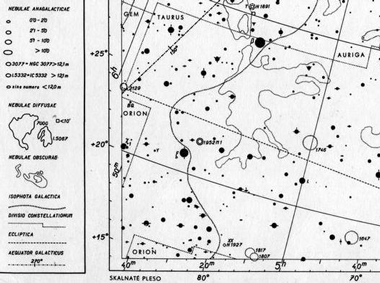
During his work in High Tatras he did not forgot about meterology - he photographed
clouds and nature of High Tatras. His photos about Slovak mountains were
published in a book of pictures "High Tatras" in 1948. Another his book was
Atlas Nubium Skalnate Pleso published in 1953. He wrote also fiction "The sole summer"
in 1940. He wrote also book for children "First route to the stars", where he
described elements of astronomy.
The political changes in Czechoslovakia after communists took over in 1948 hard knocked
his next life. His book "The mirror of cosmos" already printed was stopped by
the censorship in 1949. It is hard to understand and even harder to epxlain why
would this happen. Many artists, writers and scientist, not mention other ordinary
people, lost their jobs, positions and were "forgotten" like Bečvář in those times.
In 1950 he was withdrawn from his position and he unwillingly was pensioned. At the same
time he stopped writing for magazines. He returned back to Brandys nad Labem followed there
by his wife Klara. Bečvář renewed his observatory in Brandys. Even though Bečvář
was at that time well known and respected astronomer all over the world, in
Czechoslovkia it was different. He became a "persona non grata", most of his
colleagues broked their contacts with him.
Since he returned to Brandys nad Labem they lived in loneliness. He started to
work, even more hard on his atlases - Eclipticalis, Borealis and Australis. This
time the only one who helped him with a huge amount of data was his wife. They were
a perfect team. Atlas eclipticalis was published in 1958 and it contains
32 maps of Ecliptic region. Then Atlases Borealis and Australis followed in years 1962 and 1964.
Both consist of 24 maps. After that he began to work on Atlas Galacticus,
unfortunately this work he did not finish. Designer of star atlases passed away
towards the stars on January 10th 1965.
He drawn the realm of stars in his atlases and his name became immortal as
the crater on the Moon, and both as the comet and asteroid orbiting our Sun.
In times of Roman Empire, Seneca would surely labeled Bečvář by his quote
"Per aspera ad astra".
Asteroid 1982 SO1
discovered by M. Mahrova on 1982 Sept. 17 at Kleť Observatory
was named in his honor
(4567) Bečvář.
(4567) Bečvář = 1982 SO1
Discovered 1982 Sept. 17 by M. Mahrová at Kleť.
Named in memory of Czech astronomer Antoním Bečvář (1901-1965) , founder and first
director of Skalnaté Pleso Observatory in Slovakia. Bečvár made observations of cometes, meteors and solar photosphere,
but he is best know as author of Atlas Coeli and the more detailed Atlases Eclipticalis, Borealis and Australis.
Bečvár is also honour by lunar crater.
|
List of comets discovered by Antonín Bečvář
|
Comet
|
Designation
of discoveries
|
Date
of discovery
|
Brightness
at discovery
|
Previous
designation
|
|
Whipple-Bernasconi-Kulin |
C/1942 C1
|
1942 Feb 18
|
7. magn.
|
1942 a
|
|
Bečvář |
C/1947 F2
|
1948 Mar 13
|
10. magn.
|
1947 d
|
References: magazines Říše hvězd, Kozmos
|



